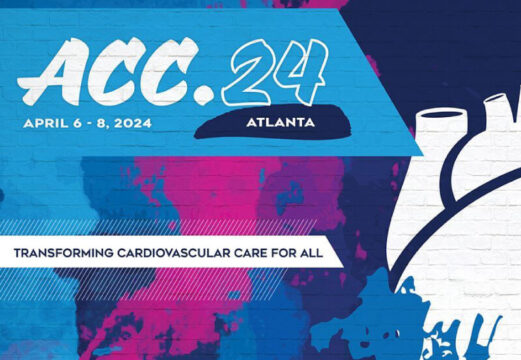During the “Mitral Valve” session (on the first day of the SOLACI-SOCIME 2022 Congress), Dr. Ignacio Amat Santos (SPA) delivered a great talk on transcatheter mitral valve replacement (TMVR).
During his presentation, he discussed different scenarios for transcatheter replacement: mitral valve-in-vale, mitral valve-in-ring, mitral valve in MAC, and new devices for non-calcified native valves.
When analyzing prognosis, the most complex—by far—is Vi-MAC. The safest route is transseptal access, which has shown the lowest mortality (compared with transapical access).
He also shared his experience, mainly using Tendyne devices, where 93% of patients had trivial residual myocardial infarction at the 2-year follow-up.

This therapeutic treatment has limitations that resemble those of MitraClip, particularly in patients with severe impairment of ventricular function or severely dilated ventricles.
Main post-implantation complications were left ventricle outflow tract and prosthesis migration/embolization. To prevent these, prior septal ablation using alcohol or, in certain cases, thought radiation can be performed. This would lead to a modified outflow tract (NelLVOT).
Lastly, Dr. Amat Santos highlighted that TMVR is still in its early stages, and there are plenty of clinical and technical aspects to solve.
Later, Dr. Luis Nombela-Franco (SPA), from San Carlos Hospital in Madrid, discussed mitral regurgitation (MR) transcatheter treatment using edge-to-edge therapy.
According to registries, over 150,000 edge-to-edge devices have been implanted worldwide—mainly MitraClip, although the Pascal P10/Ace is also available. Indications include primary MR (non-surgical patients) backed by the Everest study results, but we are still waiting for the results of the MITRA-HR and Repair-MR to reach better conclusions.

In terms of functional or secondary MR, both American and European (IIa) guidelines favor edge-to-edge treatment. This evidence is moving forward with the 3-year results of the COAPT study.
Furthermore, proper patient selection is necessary to improve results, and more experienced centers with higher volumes could accept more complex anatomies.

Dr. Omar Tupayachi.
Member of the Editorial Board of SOLACI.org.
Subscribe to our weekly newsletter
Get the latest scientific articles on interventional cardiology




